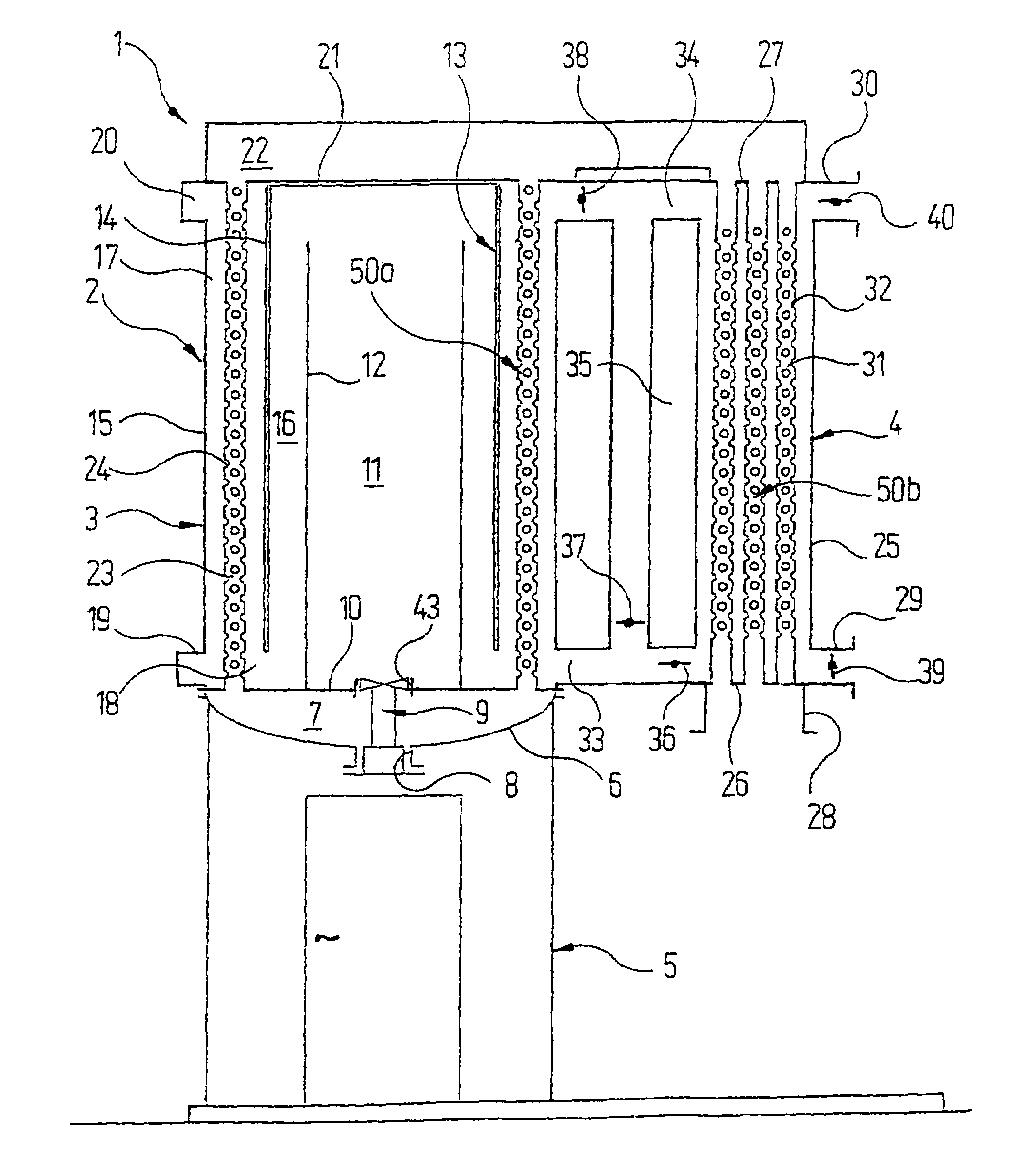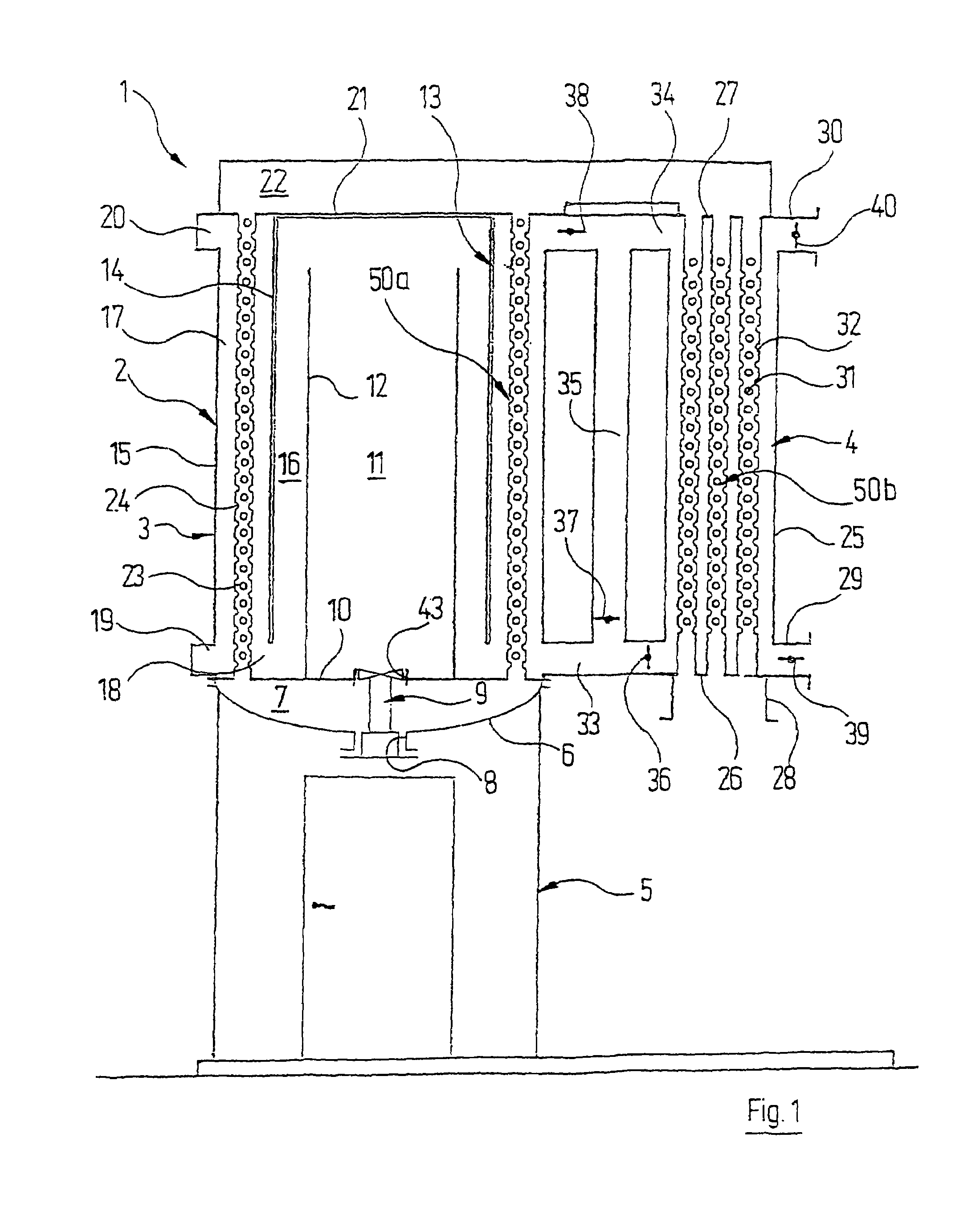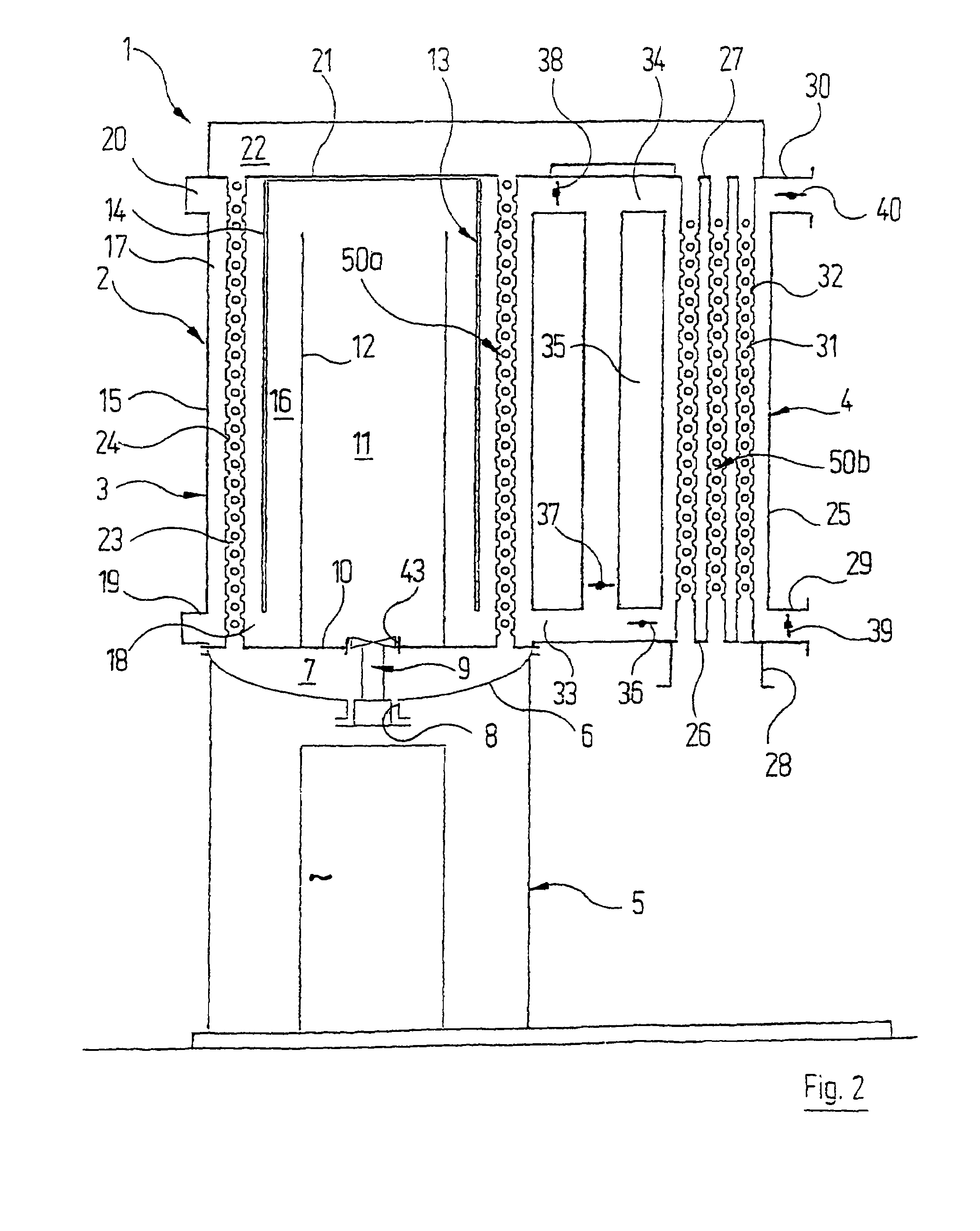Thermal postcombustion device and method for operating the same
a technology of post-combustion device and heat dissipation device, which is applied in the direction of solid fuel combustion, combustion types, lighting and heating apparatus, etc., can solve the problems of limited disposal of air containing adherent residues, reducing efficiency, and shutting down operation, so as to achieve the effect of shortening the tim
- Summary
- Abstract
- Description
- Claims
- Application Information
AI Technical Summary
Benefits of technology
Problems solved by technology
Method used
Image
Examples
first embodiment
[0026]Reference is firstly made to FIGS. 1 to 3, in which a thermal postcombustion device is shown. Said thermal postcombustion device is able to carry out self-cleaning in two different operating modes, in which deposits originating from the exhaust air to be cleaned, are able to be removed.
[0027]The thermal postcombustion device is identified as a whole by the reference numeral 1. It includes a housing 2, which is made up of a main housing 3, a secondary housing 4 and an accessible substructure 5. The accessible substructure 5 is arranged coaxially below the main housing 3, and bears the main housing 3 as well as the secondary housing 4 connected thereto.
[0028]The cover 6 of the substructure 5 is arched downwards and at the same time forms the base of a plenum 7. A burner 9 is passed through a central opening 8 of the base 6 of the plenum 7. The components required for operating the burner 9 and not shown separately in the drawings, in particular the electrical control lines and p...
second embodiment
[0051]The construction of the second embodiment shown in FIGS. 4 and 5 of a thermal postcombustion device substantially coincides with the embodiment which was disclosed above with reference to FIGS. 1 to 3. Corresponding parts are, therefore, identified with the same reference numerals, plus 100.
[0052]The construction of the main housing 103, the substructure 105 of the upper air plenum 122 and the connecting lines 133, 134, 135, together with the components contained therein, coincides entirely with the conditions shown in FIGS. 1 to 3. Differences between the two embodiments are only in the construction of the secondary housing 104. This has, as FIGS. 4 and 5 make clear, only one single lower outlet 129 for clean gas, in which however no controllable flap needs to be arranged. At the axial height at which the lower connecting line 133 and the upper connecting line 134 discharge into the interior of the secondary housing 104, annular channels 141, 142 extend which are formed by co...
third embodiment
[0066]For the description of the mode of operation of a thermal postcombustion device 201, reference is firstly made to FIG. 6. This shows the position of the different flaps in an operating mode, in which the second preheat exchanger 250b′ operates in normal mode and the first preheat exchanger 250b is at a standstill. To this end, all flaps 236, 239 and 282 associated with the first preheat exchanger 250b are closed. The flap 236′ leading to the lower end region of the interior of the second secondary housing 204′ is also closed whilst the flaps 282′ and 239′ are open.
[0067]In these flap positions, the exhaust air to be cleaned flows via the inlet pipe 228′ into the heat exchanger pipes 231′ of the second preheat exchanger 250b′ via the upper plenum 222 through the heat exchanger pipes 223 of the primary heat exchanger 250a, through the lower plenum 207 into the combustion chamber 211, where the combustion of pollutants is initiated, via the annular spaces 216, 217 along the outer...
PUM
 Login to View More
Login to View More Abstract
Description
Claims
Application Information
 Login to View More
Login to View More - R&D
- Intellectual Property
- Life Sciences
- Materials
- Tech Scout
- Unparalleled Data Quality
- Higher Quality Content
- 60% Fewer Hallucinations
Browse by: Latest US Patents, China's latest patents, Technical Efficacy Thesaurus, Application Domain, Technology Topic, Popular Technical Reports.
© 2025 PatSnap. All rights reserved.Legal|Privacy policy|Modern Slavery Act Transparency Statement|Sitemap|About US| Contact US: help@patsnap.com



